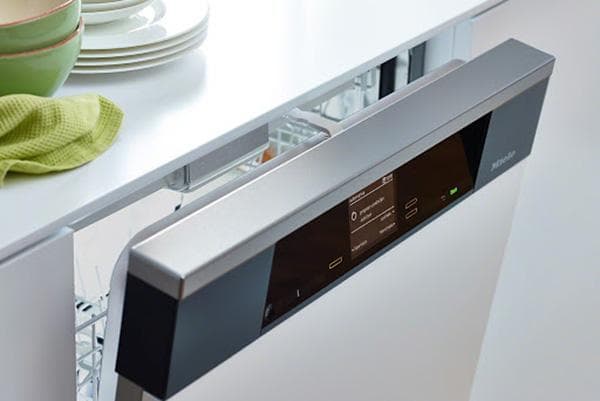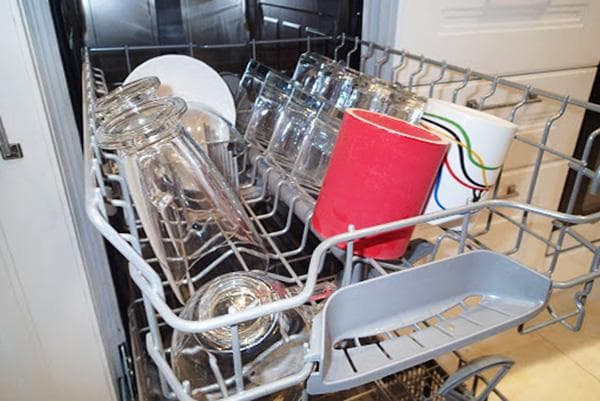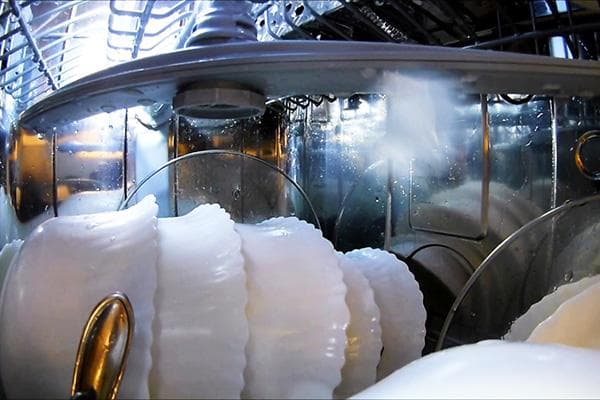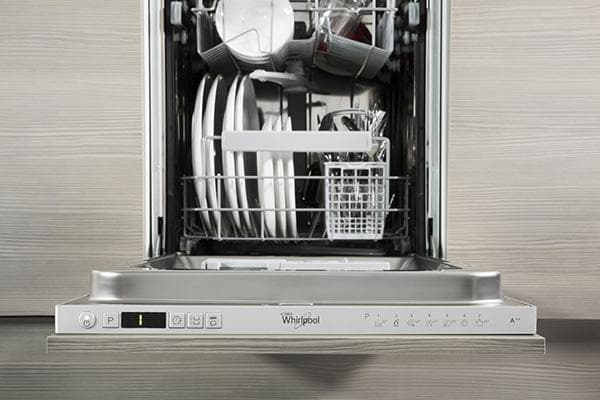How much water and electricity does a dishwasher use per cycle?
Household appliances that help to cope with household chores have become firmly established in the everyday life of modern people. However, many housewives still prefer to wash dishes by hand, citing the high water consumption in the dishwasher and unjustified costs for electricity and detergents. Experts say this is far from true. Indicators vary depending on the machine model, build quality, loading mode and other factors.

What does water consumption depend on?
Buying a dishwasher cannot be called an ordinary purchase, because such equipment is chosen for 5-10 years, and you want it to work without failures and extra costs. The water consumption indicator is especially relevant for those who pay by meter. When choosing a model, you need to pay attention not only to the appearance and brand name, but also to the main technical characteristics of the model indicated by the manufacturer in the passport.
Machine volume
The liquid consumption of a dishwasher primarily depends on its volume. The following models are mainly chosen for home use:
- compact — hold from 4 to 8 standard sets of dishes, consume 7 liters of water;
- narrow — 45 cm wide, can hold 10-12 sets, average consumption is 9–10 l;
- full-size - 60 cm wide, holds 12-17 sets of dishes, consumes from 10 to 14 liters.
For a family of two people, a compact device is quite suitable.If you take a full-size model, you will either have to hoard dirty dishes for several days until it is fully loaded, or drive a half-empty machine.
Economy level
The level of water savings in dishwashing equipment depends on the manufacturer - how advanced technologies it uses in the manufacture of its product.
Cars are divided into three classes:
- highly economical;
- with average efficiency;
- uneconomical.
All models from well-known global manufacturers, such as Bosch, Siemens, Kandy, Electrolux, have a high efficiency class and on average consume 10-12 liters of water per cycle.
Download mode
Most modern models have a half-load function, which allows you to not only wash half as many dishes, but also consume half as much liquid and electricity. Of course, even in a machine without such a function, you can wash an incomplete volume of dishes. It’s just that the same amount of water and electricity will be spent as when the tank is fully loaded.
The partial loading function is present in all advanced models from Bosch, Ariston, Whirlpool and other manufacturers. In addition, some expensive dishwashers have built-in special water flow sensors that control the volume of incoming liquid depending on the amount of dishes and the degree of soiling.
How does a dishwasher save water?
When do you waste more water - when washing dishes by hand or in the machine? In search of an answer to this question, many experiments were carried out and it was found that when washing by hand, 10 times more liquid is wasted than when using a dishwasher.
The proof is very simple. In one minute, an average of 10 liters of water flows out of the tap.To wash 12 standard sets of dishes (12 spoons, forks, knives, flat and deep plates, tea cups), even the most efficient housewife will need at least 10 minutes. Washing dishes by hand will consume 100 liters of water during this time. And for a machine to perform similar work, 10 liters will be enough.
This efficiency is explained by the fact that the dishes are washed to a state of absolute cleanliness in a certain volume of water. And only after thorough washing, the waste liquid is discharged into the sewer, and a new portion of clean water is collected for rinsing. The washing liquid is ejected under high pressure from the smallest holes in the rocker and hits the dishes with force. In combination with an effective detergent and high water temperature, this allows you to wash your appliances as cleanly as not even the most zealous housewife could manage.
Electricity costs
When choosing a dishwasher, you need to pay attention to the amount of electricity consumed by the device.
Based on power consumption, all electrical equipment is divided into several classes:
- A+ — up to 0.65 kW/h;
- A — from 0.65 to 1.05 kW/h;
- B — from 1.05 to 1.1 kW/h;
- C - from 1.11 to 1.5 kW/h.
The more expensive the model, the more economical it is. And also the amount of energy expended depends on whether the unit is connected to cold or hot water. Typically, the machine is connected to a pipe with cold water, which the machine itself heats to the desired temperature using an electric heating element. It is not advisable to use hot water directly from the tap, as it contains many impurities and quickly clogs filters.
The best dishwashers 40 and 65 cm
Modern manufacturers of dishwashing equipment strive to make their products more economical and functional.Here are several models with minimal water and electricity consumption that you should pay attention to when choosing.
- Bosch SMV69T70 — a full-sized built-in machine, designed to wash 14 standard sets of dishes. For a full operating cycle, which lasts 140 minutes, it consumes 9.5 liters of water and 0.74 kW/h of electricity.
- Bosch SMS40L02 — a free-standing machine 60 cm wide, consumes 12 liters of water. In terms of energy consumption it belongs to class A.
- Hotpoint-Ariston LTF 11S111 — a spacious dishwasher is designed to clean 15 sets of dishes. For a full cycle it consumes 11 liters of water resources and 1.07 kWh of energy.
- Zanussi ZDV 91500 FA — a narrow built-in dishwasher that will wash 9 sets in one cycle, spending 9 liters of water and 0.9 kWh of electricity.
- Whirlpool ADG 422 — a stylish model with a width of 45 cm, built under the countertop, can easily cope with 10 sets of utensils, using 9 liters of water for cleaning. Energy saving class A+.
A dishwasher is a wonderful purchase in every way. In addition to the fact that this modern device significantly reduces the cost of washing dishes, consuming a minimal amount of water and very little energy, it has many other advantages. The main thing is to save the housewife’s time and effort. Having such an assistant in the kitchen, you won’t have to stand at the sink three times a day doing monotonous work. High quality dishwashing is also an advantage of this wonderful device. Few hands can withstand the effects of water heated to +70°C in combination with detergent. But this is exactly the environment that is created inside the loading tank when the machine is operating.






Definitely, dishwashers use much less water than hand washing. With our PMM Indesit, the savings are generally noticeable.
Let's start with water consumption - from a regular tap with a water supply pressure of 3 kg, 6 liters of water flows out, and not 10, as indicated in the article, 10 minutes to wash 12 sets of dishes, this figure is also taken from the ceiling, accumulate a set of dishes from 12 sets, for a family of 3-4 people, it will take more than one day, and most importantly, the cost of detergent is somehow not reflected in the article, although they form a significant part when calculating the cost of washing dishes.